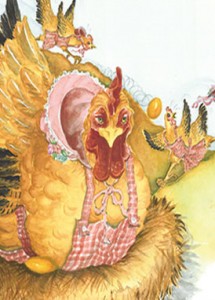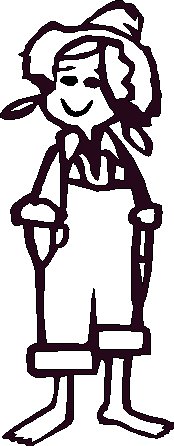
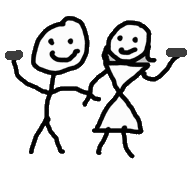 This is my family. I am Jack. Jill is my sister. Mr. Jack Painter is my father. Mrs. Julia Painter is my mother. Mr. and Mrs. Painter are my parents. I am their son. Jill is their daughter. I am Jill’s brother. Parents and children make a family. They live together in a house. My father paints cars. My mother also helps him in his work. I find his work fascinating. When I grow up I will learn to paint cars too.
This is my family. I am Jack. Jill is my sister. Mr. Jack Painter is my father. Mrs. Julia Painter is my mother. Mr. and Mrs. Painter are my parents. I am their son. Jill is their daughter. I am Jill’s brother. Parents and children make a family. They live together in a house. My father paints cars. My mother also helps him in his work. I find his work fascinating. When I grow up I will learn to paint cars too.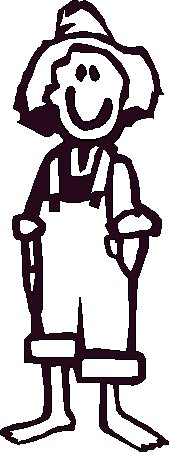
Category: Basic Comprehension Passages
The Cock, The Cat and The Mouse – Audio Story
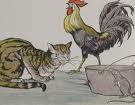 The Cock, The Cat and The Mouse
The Cock, The Cat and The Mouse
Listen to and read the story, The Cock, The Cat and The Mouse and answer the questions given below:
Once upon a time . . . a little mouse decided to go and see the world.
Packing some food for the journey, he carefully locked his door and set off
for the unknown. And what a wonderful world he saw! Tall trees, rolling
countryside, flowers and butterflies he had never set eyes on before. On he
hiked till, tired out, he came to a peasant’s cottage. After eating some of
his packed lunch, he thought he would inspect what, to him, was a peculiar
sort of building. He entered the farmyard and his eyes grew round as saucers:
there in front of him were two strange animals he had never seen before. One
was large and handsome, with four legs, covered all over with soft fur, and
sporting splendid white whiskers that gave it a solemn respectable air. It was
dozing against the wall. The other, a two-legged creature, had red, yellow and
green feathers and a fierce, bad-tempered look. A pair of cruel eyes in a
red-crested head glared at the little mouse.
“How do you do, sir! How do you do…” began the mouse’s greeting, as he
felt foolish at not knowing the stranger’s name. But the feathered creature
simply puffed out its chest, screeched a loud “Cocka-doodle-doo!” and strutted
towards the mouse, now paralyzed with fear. The little mouse saw the big
yellow beak hovering over him. “I must run!” he squeaked, turning tail and
fleeing as fast as his legs would carry him. He spied a hole in the wall and
dived into it. Inside, three faces stared at him in amazement.
“Where did you appear from?” they asked.
“I’ve come . . .” gasped the little mouse breathlessly, “. . . from far
away! Where am I now?”
“This is our home. We’re field mice. What happened?” And the little mouse
told them about the animals he had met in the farmyard: one handsome and
harmless, the other brightly coloured and ferocious. The three field mice
laughed. “Calm down,” they said. “Have a cup of coffee. Don’t you realize the
danger you were in? The creature that frightened you is only a cock, but the
nice harmless one is our deadliest enemy, the cat! If he’d seen you, you
wouldn’t be here to tell the tale. As you see, you can’t always judge by
appearances!”
-
What did the little mouse decide one day?
-
What did he see during his journey?
-
What strange creatures did he see in the farmyard?
-
Describe the two animals the mouse saw there?
-
Why was he paralyzed with fear?
-
Where did he dive into to save himself?
-
What did he find inside the hole?
-
Why did the field mice laugh when the mouse told them about the animals he had met in the farmyard?
-
What did the field mice tell him about the two animals?
-
Find the meaning of the underlined words in the story.( You can take the help of the dictionary given here).
The Conceited Stag- Audio Story
Listen to and read the story The Conceited Stag and answer the questions given below:
Once upon a time… there was a stag with splendidly long antlers, who was
very conceited. Every time he drank at a pool, he would stand and admire his
reflection in the water. “I am handsome,” he would tell himself. “There’s no
finer set of antlers in the forest!” And off he would prance. Like all stags,
he had long slender legs, but folks said he’d rather break a leg than lose a
single branch of his splendid antlers. Poor foolish stag! How vain he was.
One day, as he grazed peacefully on the tender shoots on some low branches,
he heard a distant shot. He heard with fear the baying of the hounds.
Terrified, he knew what terrible enemies the hounds were and that, if they
caught his scent, it would not be easy to outrun them. He had to flee at once,
and as quickly as possible. Faster and faster, he sped along the woodland
track, his heart in his mouth. He could hear the baying of the pack at his
heels. Without ever looking back, he ran in a straight line, trying to shake
off his pursuers. Then the wood thinned out into a clearing. “With luck I’ll be
safe now,” he said to himself, running swiftly over the smooth ground. And
indeed, the yelping of the hounds seemed to die away in the distance.
Only a little further now, and the stag would reach safety. Suddenly, as he
swept under a tree, his antlers caught in the low-hanging branches. He shook
his head desperately, trying to break free, but although he struggled, his
antlers were held fast. The hounds were coming closer and closer. Just before
the stag met his doom, he had time to think: “What a mistake I made in
regarding my antlers as the best and most precious part of my body. I should
have had more respect for my legs. They tried to carry me to safety, while my
antlers will be the death of me!”
- Why was the stag conceited?
- Where did he admire his reflection?
- What did he hear one day while he was grazing?
- Why was he terrified?
- What did he do to save himself?
- Was he able to save himself? Why?
- What were the stag’s last thoughts?
- Give the meaning of the underlined words in the story. (You can also search for these words in the dictionary given here.)
The Milk Maid and Her Pail – Audio Story
Listen to and read the story of The Milk Maid and Her Pail and answer the questions given below:
Martha, the milkmaid made her living by selling milk. She always dreamt of becoming rich and famous.
One morning, like every morning, she set out with a pail of milk over her head. Suddenly, a thought came into her mind, “With the money, I’ll get after selling this milk, I shall buy eggs. The eggs would hatch to give me a lot of chickens. I’ll sell them to buy a piglet. Then I’ll feed the piglet and when he grows fat, I’ll sell him. This will give me enough money to buy a kid. When the kid would grow into a goat, I’ll sell it. This will give me enough money to buy a cow. The cow would give me more milk, which I would sell and buy a necklace for myself. Then I will wear that necklace and go around the village. Other girls would be jealous of me. What fun would it be!”
All the while, she was dreaming, she was unaware of her surroundings. She suddenly tripped over a stone and fell. And so did her pail of milk. A cat rushed in and lapped up the milk before it seeped into the ground. “Oh, there go my chickens, piglet, goat and cow!” she cried. “All my dreams have been shattered. Had I been more careful I would have earned the money.”
When Martha went back home, she narrated the entire incident to her father. He said, “Martha, dreams inspire us to achieve our goals. But to reach those goals, we must do our job with full dedication and concentration. Dreams can come true only through hard work! Do not count your chickens before they are hatched.”
-
How did Martha make a living?
-
What did she always dream of?
-
What thoughts came to her mind one morning, when she set out with a pail of milk on her head?
-
What happened while she was day-dreaming?
-
Who lapped up all the milk?
-
Was Martha able to realise her dreams?
-
Where did Martha go after the incident?
-
To whom did she narrate the whole incident?
-
What did her father tell her?
-
What is the meaning of – Do not count your chickens before they are hatched?
The Three Wishes – Audio Story
Once upon a time, there lived a poor woodcutter.
He lived in a small cottage with his wife.Every morning, he would go to the forest to cut firewood.
He would sell it in the town-market in the evening. With the money he got after selling it, he would buy
food for himself and his wife. The woodcutter was content, but his wife wanted to lead a better life. So she often prayed to God.
One fine morning, the woodcutter reached the forest. However, he found it difficult to decide which tree to cut. Finally he selected a tall tree with a fat trunk.
He was about to strike it with his axe when he heard a voice say, ” Do not cut the tree, Sire. Have pity on me.” He turned around but saw none.
Suddenly he realised that it was the tree that was speaking. The tree said, “If you spare me, I will grant you three wishes.”
The woodcutter was very excited. He rushed back home and told about his adventure in the woods to his wife. His wife was overjoyed and she served him hot porridge.
“Oh! Just porridge? I wish fresh hot bread were to fall through the chimney,” he said.
Lo and behold! Fresh hot bread began falling from the chimney.
“You have wasted one wish. I wish these hot breads were to hang down your nose,” said the woodcutter’s wife.
And indeed the next moment, the fresh hot loaves were hanging from her husband’s nose.
The woodcutter’s wife tried to calm him, ” Do not worry, dear husband. We still have one wish. We can wish for all the good things and then we can lead comfortable lives,” she said.
” But how can I be comfortable with these hot loaves hanging from my nose,”said the woodcutter. “I wish they go up the way they came.”
And the loaves indeed went up the chimney the moment he uttered those words.
Listen to and read the story “The Three Wishes” and then answer the following questions:
-
Where did the poor woodcutter live?
-
Where did he go every morning?
-
Where did he sell the firewood?
-
What did he buy from the money he got after selling firewood?
-
Was the woodcutter’s wife content with her life?
-
Describe the woodcutter’s adventure in the forest?
-
What did the tree grant the woodcutter and why?
-
What did the woodcutter’s wife serve him when he gave her the good news?
-
What was the woodcutter’s first wish?
-
How did the woodcutter’s wife react when she saw fresh hot bread falling down the chimney?
-
What was their third wish?
-
Did the woodcutter and his wife use the three wishes wisely?
-
What do you learn from this story?
-
Find the meaning of the words underlined in the story?
The Hen that laid Golden Eggs – Audio Story
Listen to and read the story, The Hen that laid Golden Eggs and answer the questions given below:
Once upon a time, there was a farmer who had a wonderful hen . It laid a golden egg everyday. Each morning , the farmer went to the marketplace and sold the eggs for a great deal of money. Soon the farmer grew rich. However, the richer he grew, the greedier he became. So he fed the hen nice corn with the hope that she would lay two golden eggs everyday. But to the farmer’s utter dismay, the hen laid only one golden egg every day. He tried everything, but the hen continued to lay just one golden egg.
One morning, the farmer thought, “If this hen lays golden eggs, then her insides may be of gold. I must cut her open and get all the golden eggs at once.” And with a sharp knife, the greedy farmer cut the poor hen.
To his utter surprise, the farmer found that his hen’s insides were like any other hen’s.
- What did the farmer have?
- What did it lay everyday?
- What did the farmer do with the golden egg everyday?
- Was the farmer satisfied?
- What more did he want from the hen?
- What did the farmer do to satisfy his greed?
- What did he find inside the hen?
- What do you learn from this story?
Choose the correct word:
- The farmer had a dreadful/wonderful hen.
- It laid a silver/golden egg everyday.
- The farmer sold the egg for a little/great deal of money everyday.
- Soon the farmer grew very poor/rich.
- The farmer became generous/greedy.
The Blue Jackal
 Once upon a time,there lived a jackal in a forest by the name of Chandaraka. One day, Chandaraka, driven by hunger, went to a nearby village in search of food. He was extremely hungry. Unfortunately, he met a group of dogs and they started chasing him. The jackal got frightened and fled in panic. He entered a washer man’s house in a hurry. While trying to hide himself, the jackal slipped and fell into a tub full of blue color, which the washer man had kept ready to dye the clothes.
Once upon a time,there lived a jackal in a forest by the name of Chandaraka. One day, Chandaraka, driven by hunger, went to a nearby village in search of food. He was extremely hungry. Unfortunately, he met a group of dogs and they started chasing him. The jackal got frightened and fled in panic. He entered a washer man’s house in a hurry. While trying to hide himself, the jackal slipped and fell into a tub full of blue color, which the washer man had kept ready to dye the clothes.
Soon the bark of the dogs ceased and the jackal came out of the tub. There was a big mirror fixed on the wall of the house. The jackal saw himself in the mirror and was surprised to see his blue colored body. He came out of the house and quickly ran back to the forest. When Chandraraka reached the forest, every animal failed to recognize this new creature. Infact they got frightened and ran in all directions.
Taking advantage of the situation, the jackal planned to keep the situation in his favor. He asked, “Why are you running like this? There is no need to panic. I am a unique creation of God. He told me that the animals in this jungle had no ruler and he had nominated me as your king. He had named me, Kakudruma and told me to rule this forest. Therefore, all of you can live safely under the cover of my protection.”
The innocent animals believed the shrewd jackal and accepted him as the king. The jackal appointed the lion as his minister, the tiger as his chamberlain and the wolf as the gatekeeper. After allotting positions to the animals, the new king Kakudruma banished all the jackals in the forest for the fear of being recognized. Now, the animals hunted for food and brought it to the self-proclaimed king. After taking his share, the king would distribute the remaining food equally among his subjects. So like this, he was leading a luxurious life.
One day when the blue jackal was holding his court, a herd of jackals were passing by howling to their glory. Suddenly the blue jackal forgot that he was a king and not an ordinary jackal anymore. Unable to control his natural instinct, Kakudruma howled at the top of his voice. Soon, the animals realized that they had been fooled by a jackal. In a fit of anger, all the animals, at once pounced on the blue jackal and killed him.
Moral: The one who abandons one’s own folk will perish.
Read the story of The blue Jackal and then attempt the following questions:
- What was the name of the jackal?
- Why did he go to the nearby village?
- Who frightened and chased the jackal?
- Whose house did the jackal enter?
- What did he fall into?
- Why had the washer man prepared the tub of blue color?
- Where did the jackal see his blue colored body?
- Did the animals of the forest recognize the jackal?
- How did the animals react?
- What did the jackal tell the animals?
- What positions did the jackal allot to the animals?
- How did the jackal lead this new life?
- What did the jackal forget one day and why?
- What was he unable to control?
- How did the animals recognize that he was an ordinary jackal?
- What did the animals then do?
- Give the meaning of the following words: chase, panic, hide, cease, unique, nominate, protection, shrewd, luxurious, pounced
Cinderella
The story of Cinderella is ancient, and there are variations in many countries. The most common version was translated from Charles Perrault’s “Cendrillon”, which first appeared in 1697.

Once upon a time,
there was a pretty young girl named Cinderella. Cinderella was a good, sweet, kind, pretty young girl. Cinderella’s widowed father, Baron Hardup, married again to the Baroness, a mean woman with two ugly daughters of her own. They lived together along with Buttons, the Baron’s servant and Cinderella’s friend. Cinderella’s mean stepmother and the two ugly stepsisters made Cinderella do all of the cooking and cleaning. She no longer had nice things and wore only tattered old clothes, while her stepmother and stepsisters had very nice clothes and lived very comfortably.
The Prince and Dandini, his servant, swap places so that the Prince can meet ordinary people. In this way, the Prince meets Cinderella in the woods, and Dandini suggests a ball so they can meet again.
Soon after, a letter came inviting everyone to the palace for the ball. Cinderella had no good clothes to wear to the ball, and was upset “Don’t cry, child,” said a gentle voice. “I am your fairy godmother, and I have come to help you”. Then the fairy-godmother waved her wand. Four mice became four proud horses, and a big, round pumpkin became a glittering coach. Again the fairy-godmother waved her wand and turned Cinderella’s torn dress into a beautiful gown. “You must leave the ball by midnight”, she warned. “After that, the magic spell will be broken.”
At the ball, the Prince was enchanted by Cinderella, and danced with her all evening. She felt as if she were floating on a dream! But as the clock struck midnight, Cinderella ran from the palace. She was in such a hurry that she left one glass slipper behind. The Prince ran after her, but it was too late.
The next day, the Prince and Dandini go door-to-door to find the young woman who had lost her slipper. When they got to Cinderella’s house, both stepsisters tried on the glass slipper, but their feet were much too big. Cinderella’s stepmother told them that there were no other ladies in the house. When Cinderella appeared and asked if she could try on the slipper, her stepmother was furious. Of course, the slipper fitted, and the fairy-godmother’s magic spell restored her dress and riches. The Prince would be married at last. And Cinderella’s dreams would all come true.
And they lived happily ever after……..
Read the story of Cinderella and answer the questions given below:
- What kind of a girl was Cinderella?
- What was the name of Cinderella’s father?
- Describe Cinderella’s stepmother?
- How did Cinderella’s stepmother and stepsisters treat her?
- Name the Baron’s servant and the Prince’s servant?
- Who invited everyone to the ball?
- Why was Cinderella upset?
- Who came to her help?
- What did the fairy-godmother do to help Cinderella?
- What did the fairy-godmother say to Cinderella before she left for the ball?
- How did the Prince feel when he saw Cinderella?
- How did Cinderella feel at the ball?
- What did she leave in her hurry?
- How did the Prince find Cinderella?
- How did Cinderella’s stepmother react when Cinderella asked if she too could try on the slipper?
- Did the slipper fit Cinderella’s foot?
- What happened in the end?
- Give the meaning of – mean, ugly, tattered, glittering, warning, furious.

Giraffe
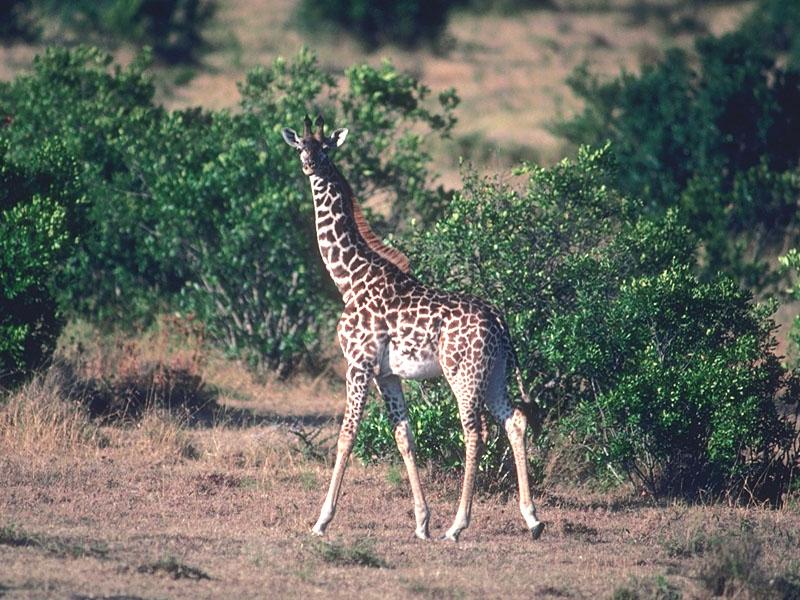 The giraffe is an African mammal. Giraffes are well known for their long necks, long legs and spotted patterns. No two giraffes have the same pattern of spots. Male giraffes are larger than females. Both male and female giraffes have small ”horns” or knobs on top of their heads. These knobs are used to protect the head in fights.
The giraffe is an African mammal. Giraffes are well known for their long necks, long legs and spotted patterns. No two giraffes have the same pattern of spots. Male giraffes are larger than females. Both male and female giraffes have small ”horns” or knobs on top of their heads. These knobs are used to protect the head in fights.
Giraffes live in the Savannas of Africa, where they roam freely among the tall trees, grasslands and open woodlands. Their long necks help giraffes to eat leaves from tall trees, typically the thorny leaves of the acacia tree. This is their favorite meal. They also browse on the twigs of trees and other vegetable food. A giraffe can eat 63 kg of leaves and twigs daily. Giraffes drink large quantities of water but if they need to, they can go for several days without water. They get most of the water from the plants they eat.
A giraffe cleans off any bugs that appear on its face with its extremely long tongue. The giraffe usually sleeps standing up, because it can take too long for a giraffe to get back up on its feet if a predator should approach.
The only natural predators of the giraffe are lions, hyenas and wild dogs. Young giraffes are very vulnerable and cannot defend themselves. But otherwise the giraffes’ height (almost 19 feet) and excellent vision gives them a wide view of the grasslands, where they live, making it easy for them to spot predators from a distance.
Exercise:- Answer the following questions:
- Where are giraffes found?
- Do all giraffes have the same pattern of spots?
- What do giraffes eat?
- How much can a giraffe eat everyday?
- From where do giraffes get most of the water?
- How does a giraffe clean its face?
- How does a giraffe sleep and why?
- Name some natural predators of the giraffe?
- What helps giraffes spot predators from a distance?
- Give the meaning of – protect, roam, favorite, predator, defend, vulnerable
Clothes
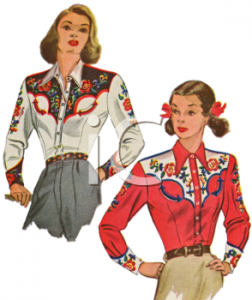 All of us wear clothes. Clothes are one of our basic needs. We wear clothes to protect our body from the sun, rain, cold and dust. We wear different according to the weather.
All of us wear clothes. Clothes are one of our basic needs. We wear clothes to protect our body from the sun, rain, cold and dust. We wear different according to the weather.
In summer, we wear light clothes. They are made up of cotton. They keep our body cool. In winter, we wear clothes made up of wool. These clothes keep our body warm and protect us from cold.
When it is raining, we either take an umbrella or wear a raincoat to avoid getting wet. We also use gumboots when it rains. They are made of plastic or rubber.
Sometimes, people wear same type of clothes daily. It is their uniform. It is for the special work they do or place they go to. Children wear school uniforms. A doctor, a nurse, a policeman, a soldier, a pilot, a lawyer are some of the people who wear uniforms.
We should always wear neat and clean clothes.
Exercise:- Match the following: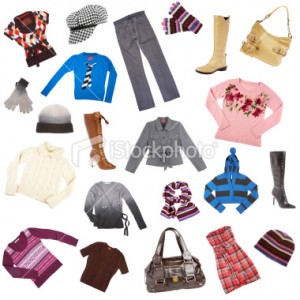
- Summer Woolen clothes
- Winter Rain Coat
- Rainy Season Cotton Clothes
Exercise:- Fill in the blanks:
- We wear _____ to protect our body.
- We wear _____ in school.
- In summer, we wear clothes made up of _____.
- Raincoats protect us from getting _____.
- We should always wear _____ and _____ clothes.



